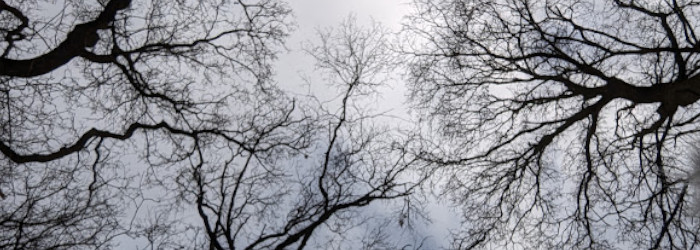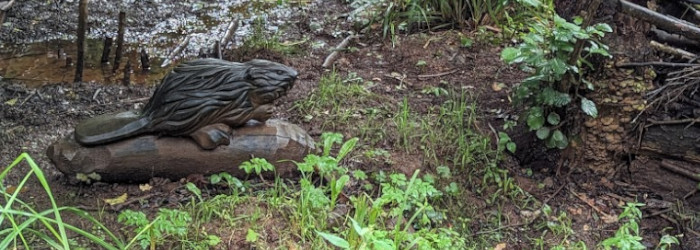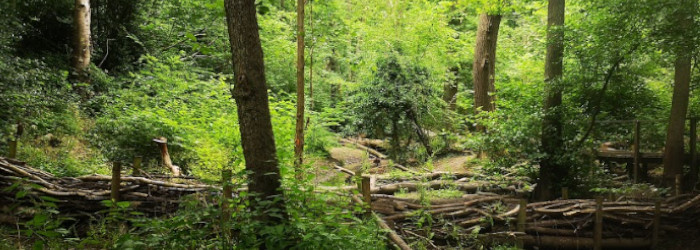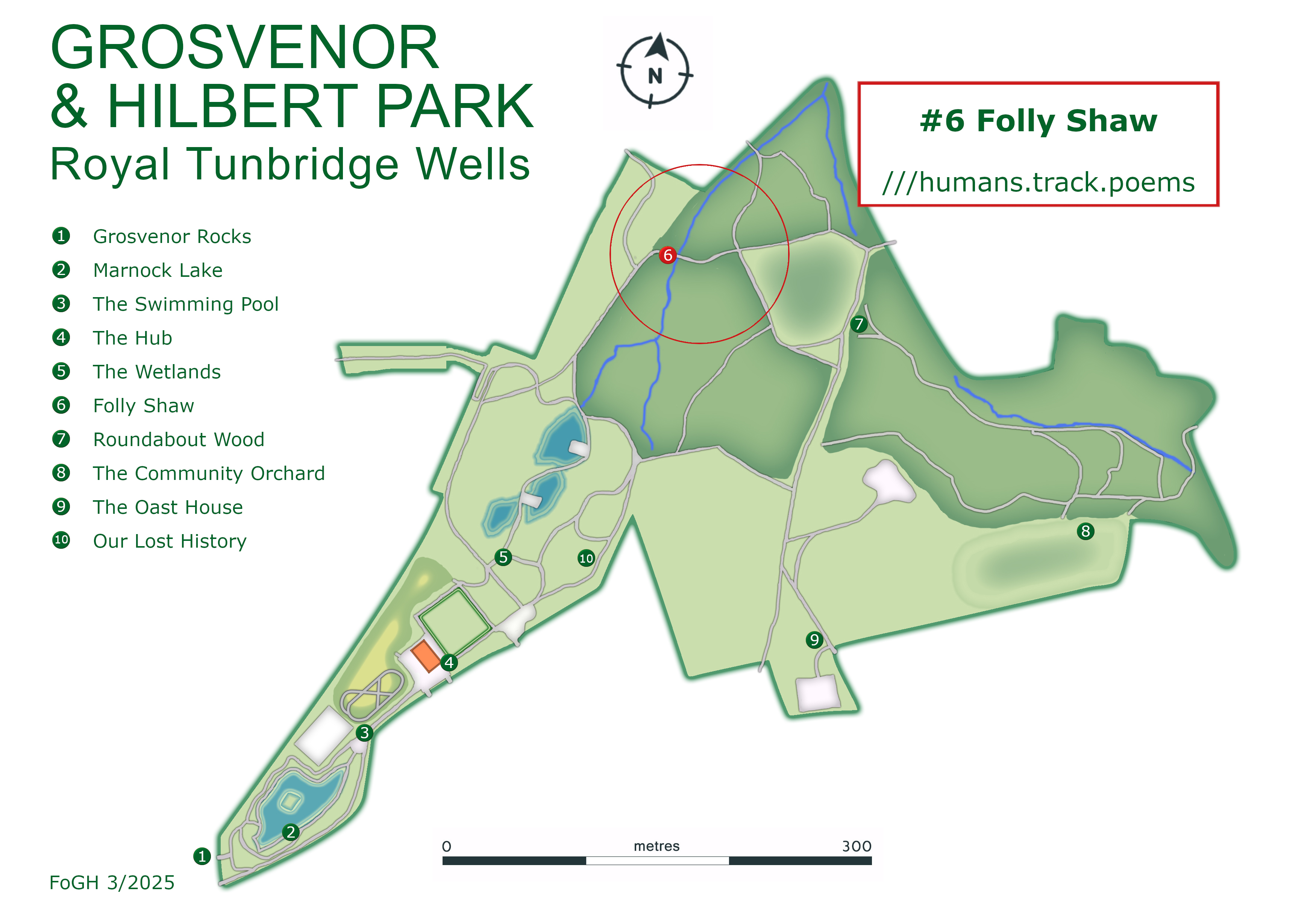
Folly Shaw

In 2000 Folly Shaw and Roundabout Wood were designated as Hilbert Woods Local Nature Reserve and are managed by KHWP.
The bridge was completely rebuilt during the Heritage Lottery refurbishment, and it crosses the stream coming from the wetlands. You can clearly see the effect this iron-rich (chalybeate) water has on its surroundings - it's what Tunbridge Wells is famous for! Despite the colour, the population of freshwater shrimp shows that it is unpolluted. There is a carved beaver, next to the leaky dam, which slows the stream during heavy rain, to prevent flooding downstream.
During World War II land between Folly Shaw and Roundabout Wood was used as allotments as part of the Dig for Victory campaign. In 2007 this area was planted with trees to link the two woods together and is known as Appledore Wood. It's managed by KHWP as a woodland pasture.
The trail carries on to Roundabout Wood, but if you'd like to explore Folly Shaw wood, then turn right at the top of the slope.
Just For Kids

Can you spot the beaver? She blends into the background quite well.
Do you think this would be a good place for a beaver to live?
If you are following the 'brass-rubbing' trail you'll find two near here. There is a dragonfly by the bridge here and a cow on the path to Roundabout Wood.
Folly Shaw: Nature

The trees here are mostly oak in the drier areas and alder where it's wetter - springs are a particular feature of the woods in the park. Shrubs and small trees like sallow, hazel and elder take advantage of the sunlit edges of the woods and provide nectar sources for a range of insects. Along the banks of the chalybeate spring ramsoms or wild garlic grow extensively - look out for their white flowers in spring.
Thick layers of leaf litter form on the woodland floor, which is home to many invertebrates. These are food for mini-hunters like centipedes and spiders, which are in turn eaten by birds and small mammals.
What Next: Roundabout Wood

Follow the path over the bridge, through Appledore Wood and into Roundabout on the boardwalk.
